- Home
- Robert Silverberg
Legends: Stories By The Masters of Modern Fantasy
Legends: Stories By The Masters of Modern Fantasy Read online
The author and publisher have provided this e-book to you without Digital Rights Management software (DRM) applied so that you can enjoy reading it on your personal devices. This e-book is for your personal use only. You may not print or post this e-book, or make this e-book publicly available in any way. You may not copy, reproduce or upload this e-book, other than to read it on one of your personal devices.
Copyright infringement is against the law. If you believe the copy of this e-book you are reading infringes on the author’s copyright, please notify the publisher at: us.macmillanusa.com/piracy.
FOR MARTY AND RALPH
who certainly know why
Table of Contents
Title Page
Copyright Notice
INTRODUCTION
The Dark Tower
The Little Sisters of Eluria
I. Full Earth. The Empty Town. The Bells. The Dead Boy. The Overturned Wagon. The Green Folk.
II. Rising. Hanging Suspended. White Beauty. Two Others. The Medallion.
III. Five Sisters. Jenna. The Doctors of Eluria. The Medallion. A Promise of Silence.
IV. A Bowl of Soup. The Boy in the Next Bed. The Night-Nurses.
V. Sister Mary. A Message. A Visit from Ralph. Norman’s Fate. Sister Mary Again.
VI. Jenna. Sister Coquina. Tamra, Michela, Louise. The Cross-Dog. What Happened in the Sage.
Discworld
The Sea and Little Fishes
The Sword of Truth
Debt of Bones
Tales of Alvin Maker
Grinning Man
Majipoor
The Seventh Shrine
Earthsea
Dragonfly
1. Iria
2. Ivory
3. Azver
4. Irian
Memory, Sorrow and Thorn
The Burning Man
A Song of Ice and Fire
The Hedge Knight A Tale of the Seven Kingdoms
Pern
Runner of Pern
The Riftwar Saga
The Wood Boy - A Tate from the Riftwar
The Wheel of Time
New Spring
COPYRIGHT ACKNOWLEDGMENTS
Copyright Page
INTRODUCTION
Here is a book of visions and miracles—eleven rich, robust new stories by the best-known and most accomplished modern creators of fantasy fiction, each one set in the special universe of the imagination that made that writer famous throughout the world.
Fantasy is the oldest branch of imaginative literature—as old as the human imagination itself. It is not difficult to believe that the same artistic impulse that produced the extraordinary cave paintings of Altamira and Chauvet, fifteen and twenty and even thirty thousand years ago, also probably produced astounding tales of gods and demons, of talismans and spells, of dragons and werewolves, of wondrous lands beyond the horizon—tales that fur-clad shamans recited to fascinated audiences around the campfires of Ice Age Europe. So, too, in torrid Africa, in the China of prehistory, in ancient India, in the Americas: everywhere, in fact, on and on back through time for thousands or even hundreds of thousands of years. I like to think that the storytelling impulse is universal—that there have been storytellers as long as there have been beings in this world that could be spoken of as “human”—and that those storytellers have in particular devoted their skills and energies and talents, throughout our long evolutionary path, to the creation of extraordinary marvels and wonders.
We will never know, of course, what tales the Cro-Magnon storytellers told their spellbound audiences on those frosty nights in ancient France. But surely there were strong components of the fantastic in them. The evidence of the oldest stories that have survived argues in favor of that. If fantasy can be defined as literature that depicts the world beyond that of mundane reality, and mankind’s struggle to assert dominance over that world, then the most ancient story that has come down to us—the Sumerian tale of the hero Gilgamesh, which dates from about 2500 B.C.—is fantasy, for its theme is Gilgamesh’s quest for eternal life.
Homer’s Odyssey, abounding as it does in shape-shifters and wizards and sorceresses, in Cyclopses and many-headed man-eating creatures, is rich with fantastic elements, too, as are any number of other Greek and Roman tales. As we come closer to our own times we meet the dread monster Grendel of the Anglo-Saxon Beowulf, the Midgard serpent and the dragon Fafnir and the apocalyptic Fenris-wolf of the Norse sagas, the hapless immortality-craving Dr. Faustus of German legend, the myriad enchanters of The Thousand and One Nights, the far-larger-than-life heroes of the Welsh Mabinogion and the Persian Shah-Nameh, and an infinity of other strange and wonderful creations.
Nor did the impulse toward the creation of the fantastic disappear as the modern era, the era of microscopes and telescopes, of steam engines and railway systems, of telegraphs and phonographs and electric light, came into being. Our fascination with the unseen and the unseeable did not end simply because so many things previously thought impossible now had become realities. What is more fantastic, after all, than having the sound of an entire symphony orchestra rise up out of a flat disk of plastic? Or to speak into a device that one holds in one’s hand, and be heard and understood ten thousand miles away? But the same century that gave us the inventions of Thomas Alva Edison and Alexander Graham Bell gave us Lewis Carroll’s two incomparable tales of Alice’s adventures in other realities, H. Rider Haggard’s innumerable novels of lost civilizations, and Mary Wollstonecraft Shelley’s Frankenstein.
Nor did the twentieth century—the century of air travel and atomic energy, of television and computers, of open-heart surgery and sexchange operations—see us losing our taste for tales of the extraordinary. A host of machine-age fantasists—James Branch Cabell and A. Merritt and Lord Dunsany, E. R. Eddison and Mervyn Peake and L. Frank Baum, H. P. Lovecraft and Robert E. Howard and J. R. R. Tolkien, to name a few of the best-known ones—kept the world well supplied with wondrous tales of the fantastic.
One change of tone did occur in the twentieth century, though, with the rise to popularity of science fiction—the branch of fantasy that applies immense ingenuity to the task of making the impossible, or at least the implausible, seem altogether probable. As science fiction—which was given its essential nature well over a hundred years ago by Jules Verne and H. G. Wells, and developed in modern times by such writers as Robert A. Heinlein, Isaac Asimov, and Aldous Huxley—came to exert its immense appeal on the atomic-age reading public, “pure” fantasy fiction (that is, fantasy that makes no attempt at empirical explanation of its wonders) came to be thought of as something largely reserved for children, like myths and fairy tales.
The older kind of fantasy never disappeared, of course. But in the United States, at least, it went into eclipse for nearly fifty years. Science fiction, meanwhile, manifested itself to the reading public in the form of magazines with names like Amazing Stories and Astounding Science Fiction and readerships composed largely of boys and earnest young men with an interest in gadgets and scientific disputation. The only American magazine dealing in the material we define as fantasy fiction was Weird Tales, founded in 1923, but that magazine published not only fantasy but a great many other kinds of genre fiction that might not be thought of as fantasy today—tales of pure terror, for example, with no speculative content.
The separation between fantasy and science fiction is not always easy to locate, but some distinctions are fairly clear-cut, if not entirely rigid. Stories that deal with androids and robots, spaceships, alien beings, time machines, viruses from outer space, galactic empires, and the like usually can be described
as science fiction. These are all matters that are conceptually possible within the framework of scientific law as we currently understand it. (Although such things as time machines and faster-than-light vehicles certainly stretch that framework to its limits, and perhaps beyond them.) Fantasy, meanwhile, uses as its material that which is generally believed to be impossible or nonexistent in our culture: wizards and warlocks, elves and goblins, werewolves and vampires, unicorns and enchanted princesses, efficacious incantations and spells.
Fantasy fiction per se did not have a real magazine of its own until 1939, when John W. Campbell, Jr., the foremost science-fiction editor of his time, brought Unknown (later called Unknown Worlds) into being in order to allow his writers greater imaginative latitude than his definitions of science fiction would permit. Many of the same writers who had turned Campbell’s Astounding Science Fiction into the most notable magazine of its type yet published—Robert A. Heinlein, L. Sprague de Camp, Theodore Sturgeon, Lester del Rey, Jack Williamson—also became mainstays of Unknown, and the general structural approach was similar: postulate a far-out idea and develop all its consequences to a logical conclusion. The stories about being nasty to water gnomes or selling your soul to the devil wound up in Unknown; those about traveling in time or voyaging to distant planets were published in Astounding.
But Unknown, though it was cherished with great fondness by its readers and writers, never attained much of a public following, and when wartime paper shortages forced Campbell to choose between his two magazines in 1943, Unknown was swiftly killed, never to reappear. Postwar attempts by nostalgic ex-contributors to Unknown to recapture its special flavor were largely unsuccessful; H. L. Gold’s Beyond lasted ten issues, Lester del Rey’s Fantasy Fiction managed only four. Only The Magazine of Fantasy, edited by Anthony Boucher and J. Francis McComas, succeeded in establishing itself as a permanent entity, and even that magazine found it wisest to change its name to Fantasy and Science Fiction with its second issue. When science fiction became a fixture of paperback publishing in the 1950s, fantasy once again lagged behind: few fantasy novels were paperbacked, and most of them—Jack Vance’s The Dying Earth and the early reprints of H. P. Lovecraft and Robert E. Howard are good examples—quickly vanished from view and became collector’s items.
It all began to change in the late 1960s, when the sudden availability of paperback editions of J. R. R. Tolkien’s Lord of the Rings trilogy (previously kept from paperback by an unwilling hardcover publisher) aroused a hunger for fantasy fiction in millions of readers that has, so far, been insatiable. Tolkien’s books were such an emphatic commercial success that publishers rushed to find writers who could produce imitative trilogies, and the world was flooded with huge Hobbitesque novels, many of which sold in extraordinary quantities themselves. Robert Howard’s Conan novels, once admired only by a small band of ardent cultists, began to win vast new readers about the same time. And a few years later Ballantine Books, Tolkien’s paperback publisher, brought out an extraordinary series of books in its Adult Fantasy series, edited by Lin Carter, which made all the elegant classic masterpieces of such fantasists as E. R. Eddison, James Branch Cabell, Lord Dunsany, and Mervyn Peake available to modern readers. And, ever since, fantasy has been a dominant factor in modern publishing. What was a neglected stepsibling of science fiction fifty years ago is, today, an immensely popular genre.
In the wake of the great success of the Tolkien trilogy, newer writers have come along with their own deeply imagined worlds of fantasy, and have captured large and enthusiastic audiences themselves. In the late 1960s, Ursula Le Guin began her searching and sensitive Earthsea series, and Anne McCaffrey co-opted the ancient fantastic theme of the dragon for her Pern novels, which live on the borderline between fantasy and science fiction. Stephen King, some years later, won a readership of astounding magnitude by plumbing the archetypical fears of humanity and transforming them into powerful novels that occupied fantasy’s darker terrain. Terry Pratchett, on the other hand, has magnificently demonstrated the comic power of satiric fantasy. Such writers as Orson Scott Card and Raymond E. Feist have won huge followings for their Alvin Maker and Riftwar books. More recently, Robert Jordan’s mammoth Wheel of Time series, George R. R. Martin’s Song of Ice and Fire books, and Terry Goodkind’s Sword of Truth tales have taken their place in the pantheon of modern fantasy, as has Tad Williams’ Memory, Sorrow and Thorn series.
And here is the whole bunch of them, brought together in one huge anthology in which fantasy enthusiasts can revel for weeks. A new Earthsea story, a new tale of Pern, a new Dark Tower adventure, a new segment in Pratchett’s playful Discworld series, and all the rest that you’ll find herein—there has never been a book like this before. Gathering such an elite collection of first-magnitude stars into a single volume has not been an easy task. My gratitude herewith for the special assistance of Martin H. Greenberg, Ralph Vicinanza, Stephen King, John Helfers, and Virginia Kidd, who in one way or another made my editorial task immensely less difficult than it otherwise would have been. And, too, although it goes without saying that I’m grateful to my wife, Karen, for her inestimable help in every phase of this intricate project, I think I’ll say it anyway—not just because she’s a terrific person, but because she came up with what unquestionably was the smartest idea of the whole enterprise.
—Robert Silverberg
December, 1997
The Dark Tower
STEPHEN KING
THE GUNSLINGER (1982)
THE DRAWING OF THE THREE (1987)
THE WASTE LANDS (1991)
WIZARD AND GLASS (1997)
These novels, using thematic elements from Robert Browning’s poem “Childe Roland to the Dark Tower Came,” tell the saga of Roland, last of the gunslingers, who embarks on a quest to find the Dark Tower for reasons that the author has yet to reveal. Along the way, Roland encounters the remains of what was once a thriving society, feudal in nature but technologically quite advanced, that now has fallen into decay and ruin. King combines elements of fantasy with science fiction into a surreal blend of past and future.
The first book, The Gunslinger, introduces Roland, who is chasing the Dark Man, an enigmatic sorcerer figure, across a vast desert. Through flashbacks, the reader learns that Roland was a member of a noble family in the Dark Tower world, and that that world may or may not have been destroyed with help from the Dark Man. Along the way, Roland encounters strange inhabitants of this unnamed world, including Jake, a young boy who, even though he is killed by the end of the first book, will figure prominently in later volumes. Roland does catch up with the Dark Man, and learns that he must seek out the Dark Tower to find the answers to the questions of why he must embark on this quest and what is contained in the Tower.
The next book, The Drawing of the Three, shows Roland recruiting three people from present-day Earth to join him on his way to the Dark Tower. They are Eddie, a junkie “mule” working for the Mafia; Suzannah, a paraplegic with multiple personalities; and Jake, whose arrival is startling to Roland, who sacrificed Jake in his own world during his pursuit of the Dark Man. Roland saves Jake’s life on Earth, but the resulting schism nearly drives him insane. Roland must also help the other two battle their own demons, Eddie’s being his heroin addiction and guilt over not being able to save his brother’s life, and Suzannah’s the war between her different personalities, one a kind and gentle woman, the other a racist psychopath. Each of the three deals with his problems with the help of the others, and together the quartet set out on the journey to the Tower.
The third book, The Waste Lands, chronicles the first leg of that journey, examining the background of the three Earth-born characters in detail. The book reaches its climax when Jake is kidnapped by a cult thriving in the ruins of a crumbling city, led by a man known only as Flagg (a character who has appeared in several of King’s other novels as the embodiment of pure evil). Roland rescues him, and the group escapes the city on a monorail system whose artificial-intelligence pr
ogram has achieved sentience at the cost of its sanity. The monorail challenges them to a riddle contest, with their lives as the prize if they can stump the machine, who claims to know every riddle ever created.
Wizard and Glass, the fourth volume in the series, finds Roland, Jake, Eddie, and Suzannah continuing their journey toward the Dark Tower, moving through a deserted part of Mid-World that is eerily reminiscent of twentieth-century Earth. During their travels they encounter a thinny, a dangerous weakening of the barrier between different times and places. Roland recognizes it and realizes that his world is breaking down faster than he had thought. The thinny prompts him to recall the first time he encountered it, many years before on a trip out West with his friends Cuthbert and Alain, when Roland had just earned his gunslinger status. It is this story—of the three boys uncovering a plot against the ruling government and of Roland’s first love, a girl named Susan Delgado—that is the central focus of the book. While the three manage to destroy the conspirators, Susan is killed during the fight by the townspeople of Hambry. The story gives Jake, Eddie, and Suzannah new insight into Roland’s background and why he may sacrifice them to attain his ultimate goal of saving his world. The book ends with the foursome moving onward once more toward the Tower.
The Little Sisters of Eluria
STEPHEN KING
[Author’s Note: The Dark Tower books begin with Roland of Gilead, the last gunslinger in an exhausted world that has “moved on,” pursuing a magician in a black robe. Roland has been chasing Walter for a very long time. In the first book of the cycle, he finally catches up. This story, however, takes place while Roland is still casting about for Walter’s trail. A knowledge of the books is therefore not necessary for you to understand—and hopefully enjoy—the story which follows. S. K.]

 The Longest Way Home
The Longest Way Home Hawksbill Station
Hawksbill Station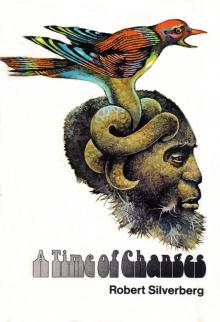 A Time of Changes
A Time of Changes This Way to the End Times: Classic Tales of the Apocalypse
This Way to the End Times: Classic Tales of the Apocalypse Beyond the Gate of Worlds
Beyond the Gate of Worlds Lord Valentine's Castle
Lord Valentine's Castle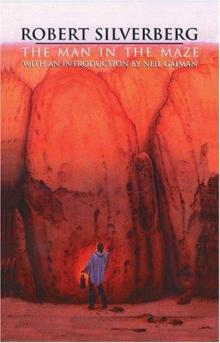 The Man in the Maze
The Man in the Maze Tales of Majipoor
Tales of Majipoor Time of the Great Freeze
Time of the Great Freeze The Collected Stories of Robert Silverberg, Volume 3: Something Wild Is Loose: 1969-72
The Collected Stories of Robert Silverberg, Volume 3: Something Wild Is Loose: 1969-72 Planet of Death
Planet of Death Trips: The Collected Stories of Robert Silverberg, Volume Four
Trips: The Collected Stories of Robert Silverberg, Volume Four In the Beginning: Tales From the Pulp Era
In the Beginning: Tales From the Pulp Era Hot Sky at Midnight
Hot Sky at Midnight Valentine Pontifex
Valentine Pontifex Up the Line
Up the Line Thorns
Thorns Amanda and the Alien
Amanda and the Alien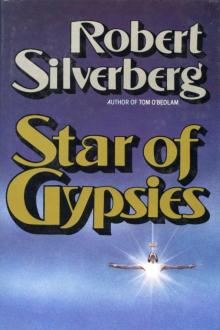 Star of Gypsies
Star of Gypsies Nightwings
Nightwings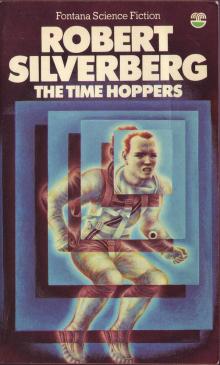 The Time Hoppers
The Time Hoppers Blood on the Mink
Blood on the Mink Dying Inside
Dying Inside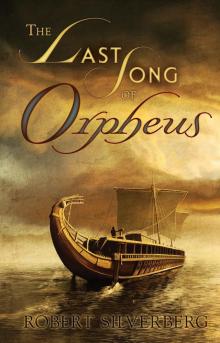 The Last Song of Orpheus
The Last Song of Orpheus The King of Dreams
The King of Dreams The Stochastic Man
The Stochastic Man The Collected Stories of Robert Silverberg, Volume Seven: We Are for the Dark
The Collected Stories of Robert Silverberg, Volume Seven: We Are for the Dark The Millennium Express: The Collected Stories of Robert Silverberg, Volume Nine
The Millennium Express: The Collected Stories of Robert Silverberg, Volume Nine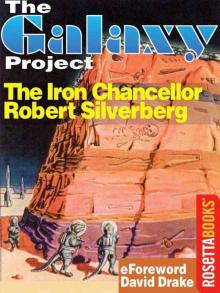 The Iron Chancellor
The Iron Chancellor Lord Prestimion
Lord Prestimion To Open the Sky
To Open the Sky The World Inside
The World Inside Chains of the Sea
Chains of the Sea The Collected Stories of Robert Silverberg, Volume Five: The Palace at Midnight
The Collected Stories of Robert Silverberg, Volume Five: The Palace at Midnight Postmark Ganymede
Postmark Ganymede The Second Trip
The Second Trip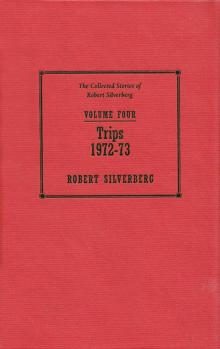 The Collected Stories of Robert Silverberg, Volume 4: Trips: 1972-73
The Collected Stories of Robert Silverberg, Volume 4: Trips: 1972-73 Son of Man
Son of Man Tom O'Bedlam
Tom O'Bedlam To the Land of the Living
To the Land of the Living To Be Continued: The Collected Stories of Robert Silverberg, Volume One
To Be Continued: The Collected Stories of Robert Silverberg, Volume One Shadrach in the Furnace
Shadrach in the Furnace The Chalice of Death: Three Novels of Mystery in Space
The Chalice of Death: Three Novels of Mystery in Space The Queen of Springtime
The Queen of Springtime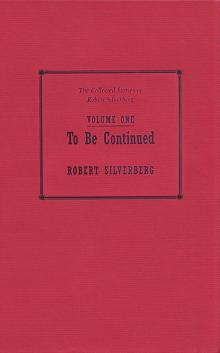 To Be Continued 1953-1958
To Be Continued 1953-1958 Legends
Legends Roma Eterna
Roma Eterna To Live Again
To Live Again At Winter's End
At Winter's End Needle in a Timestack
Needle in a Timestack To Live Again and the Second Trip: The Complete Novels
To Live Again and the Second Trip: The Complete Novels Lord of Darkness
Lord of Darkness The Mountains of Majipoor
The Mountains of Majipoor The World Outside
The World Outside The Alien Years
The Alien Years The Book of Skulls
The Book of Skulls The Face of the Waters
The Face of the Waters Gilgamesh the King
Gilgamesh the King The Collected Stories of Robert Silverberg, Volume 6: Multiples: 1983-87
The Collected Stories of Robert Silverberg, Volume 6: Multiples: 1983-87 The Happy Unfortunate
The Happy Unfortunate Three Survived
Three Survived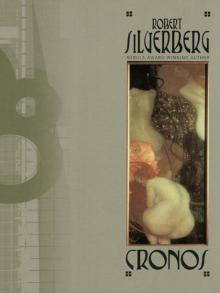 Cronos
Cronos Tower of Glass
Tower of Glass Legends II
Legends II The Planet Killers
The Planet Killers The Collected Stories of Robert Silverberg, Volume 2: To the Dark Star: 1962-69
The Collected Stories of Robert Silverberg, Volume 2: To the Dark Star: 1962-69 Downward to the Earth
Downward to the Earth Lord Valentine's Castle: Book One of the Majipoor Cycle
Lord Valentine's Castle: Book One of the Majipoor Cycle Hot Times in Magma City, 1990-95
Hot Times in Magma City, 1990-95 Hunt the Space-Witch! Seven Adventures in Time and Space
Hunt the Space-Witch! Seven Adventures in Time and Space Majipoor Chronicles
Majipoor Chronicles The Robert Silverberg Science Fiction Megapack(r)
The Robert Silverberg Science Fiction Megapack(r) Starman's Quest
Starman's Quest Car Sinister
Car Sinister Worlds of Maybe
Worlds of Maybe Fantasy The Best of 2001
Fantasy The Best of 2001 Revolt on Alpha C
Revolt on Alpha C Homefaring
Homefaring The Pardoner's Tale
The Pardoner's Tale Sailing to Byzantium - Six Novellas
Sailing to Byzantium - Six Novellas The Chalice of Death
The Chalice of Death Sundance
Sundance A Tip on a Turtle
A Tip on a Turtle Nebula Awards Showcase 2001: The Year's Best SF and Fantasy Chosen by the Science Fiction and Fantasy Writers of America
Nebula Awards Showcase 2001: The Year's Best SF and Fantasy Chosen by the Science Fiction and Fantasy Writers of America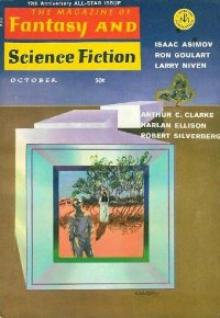 The Fangs of the Trees
The Fangs of the Trees The Palace at Midnight: The Collected Work of Robert Silverberg, Volume Five
The Palace at Midnight: The Collected Work of Robert Silverberg, Volume Five The Millennium Express - 1995-2009 - The Collected Stories of Robert Silverberg Volume Nine
The Millennium Express - 1995-2009 - The Collected Stories of Robert Silverberg Volume Nine Book of Skulls
Book of Skulls Passengers
Passengers Something Wild is Loose - 1969–72 - The Collected Stories of Robert Silverberg Volume Three
Something Wild is Loose - 1969–72 - The Collected Stories of Robert Silverberg Volume Three Multiples
Multiples Starborne
Starborne The Masks of Time
The Masks of Time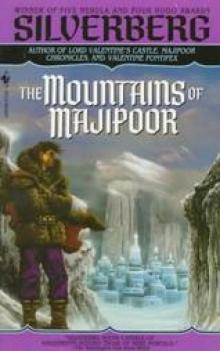 The Mountains of Majipoor m-8
The Mountains of Majipoor m-8 Multiples (1983-87)
Multiples (1983-87) Those Who Watch
Those Who Watch In the Beginning
In the Beginning Earth Is The Strangest Planet
Earth Is The Strangest Planet Collision Course
Collision Course Neutral Planet
Neutral Planet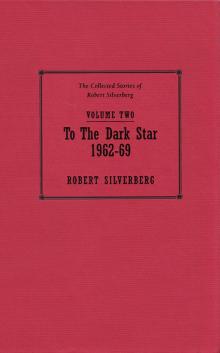 To the Dark Star - 1962–69 - The Collected Stories of Robert Silverberg Volume Two
To the Dark Star - 1962–69 - The Collected Stories of Robert Silverberg Volume Two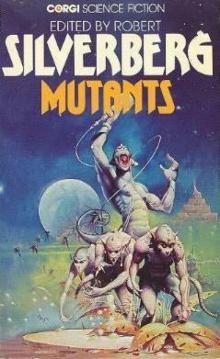 Mutants
Mutants Sailing to Byzantium
Sailing to Byzantium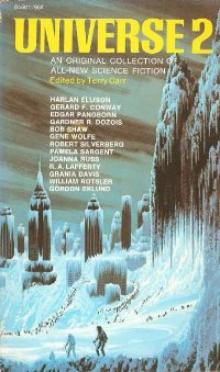 When We Went to See the End of the World
When We Went to See the End of the World Robert Silverberg The Science Fiction Hall Of Fame Volume One, 1929-1964
Robert Silverberg The Science Fiction Hall Of Fame Volume One, 1929-1964 To Be Continued - 1953–58 - The Collected Stories of Robert Silverberg Volume One
To Be Continued - 1953–58 - The Collected Stories of Robert Silverberg Volume One Valentine Pontifex m-3
Valentine Pontifex m-3 Gianni
Gianni Majipoor Chronicles m-2
Majipoor Chronicles m-2 We Are for the Dark (1987-90)
We Are for the Dark (1987-90) Waiting for the Earthquake
Waiting for the Earthquake Fantasy: The Best of 2001
Fantasy: The Best of 2001 How It Was When the Past Went Away
How It Was When the Past Went Away Beauty in the Night
Beauty in the Night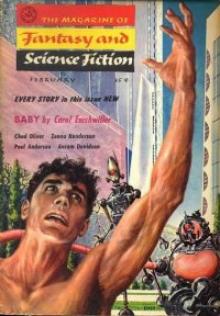 The Man Who Never Forgot
The Man Who Never Forgot The Book of Changes m-9
The Book of Changes m-9 Lord Valentine's Castle m-1
Lord Valentine's Castle m-1 This Way to the End Times
This Way to the End Times Queen of Springtime
Queen of Springtime Legends-Volume 3 Stories by the Masters of Modern Fantasy
Legends-Volume 3 Stories by the Masters of Modern Fantasy The Palace at Midnight - 1980–82 - The Collected Stories of Robert Silverberg Volume Five
The Palace at Midnight - 1980–82 - The Collected Stories of Robert Silverberg Volume Five Something Wild is Loose: The Collected Stories of Robert Silverberg, Volume Three
Something Wild is Loose: The Collected Stories of Robert Silverberg, Volume Three Multiples - 1983–87 - The Collected Stories of Robert Silverberg Volume Six
Multiples - 1983–87 - The Collected Stories of Robert Silverberg Volume Six Alaree
Alaree Three Survived: A Science Fiction Novel
Three Survived: A Science Fiction Novel Defenders of the Frontier
Defenders of the Frontier The New Springtime
The New Springtime We Are for the Dark - 1987–90 - The Collected Stories of Robert Silverberg Volume Seven
We Are for the Dark - 1987–90 - The Collected Stories of Robert Silverberg Volume Seven The Science Fiction Hall of Fame, Volume One 1929-1964--The Greatest Science Fiction Stories of All Time Chosen by the Members of the Science Fiction Writers of America
The Science Fiction Hall of Fame, Volume One 1929-1964--The Greatest Science Fiction Stories of All Time Chosen by the Members of the Science Fiction Writers of America Master Of Life And Death
Master Of Life And Death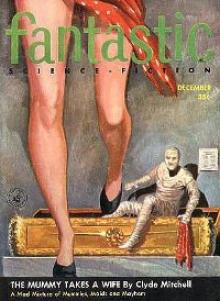 Choke Chain
Choke Chain Sorcerers of Majipoor m-4
Sorcerers of Majipoor m-4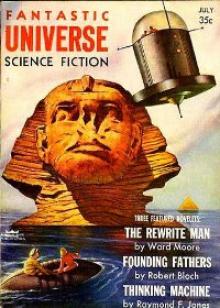 Absolutely Inflexible
Absolutely Inflexible Trips - 1962–73 - The Collected Stories of Robert Silverberg Volume Four
Trips - 1962–73 - The Collected Stories of Robert Silverberg Volume Four Hot Times in Magma City - 1990-95 - The Collected Stories of Robert Silverberg Volume Eight
Hot Times in Magma City - 1990-95 - The Collected Stories of Robert Silverberg Volume Eight Far Horizons
Far Horizons The Queen of Springtime ns-2
The Queen of Springtime ns-2 The Seventh Science Fiction Megapack
The Seventh Science Fiction Megapack Invaders From Earth
Invaders From Earth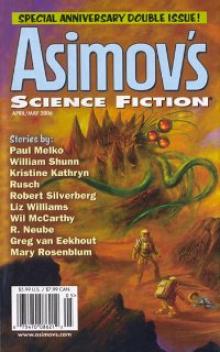 Hanosz Prime Goes To Old Earth
Hanosz Prime Goes To Old Earth The Macauley Circuit
The Macauley Circuit Science Fiction: The Best of 2001
Science Fiction: The Best of 2001 To the Dark Star: The Collected Stories of Robert Silverberg, Volume Two
To the Dark Star: The Collected Stories of Robert Silverberg, Volume Two Stochastic Man
Stochastic Man Legends: Stories By The Masters of Modern Fantasy
Legends: Stories By The Masters of Modern Fantasy To Live Again And The Second Trip
To Live Again And The Second Trip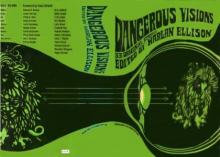 Flies
Flies The Silent Invaders
The Silent Invaders Ship-Sister, Star-Sister
Ship-Sister, Star-Sister